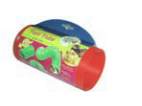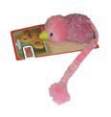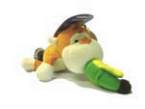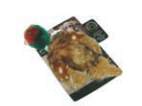Basic HTML Version





Henry, the crazy
Cocker Spaniel
by
Gareth Harries BVMS CertSAS MRCVS
Wright & Morten Veterinary Surgeons
After a few days of anti-inflammatory treatment,
he failed to recover and x-rays were obtained. The
x-rays failed to identify a cause, so we continued
anti-inflammatory and anticipated a prompt recovery.
However, rather than recovering, he got worse. Henry
was very depressed, and now lame on both of his
back legs and perhaps a little awkward on one front
leg too!
Wherever we touched him, he seemed incredibly
sensitive and even small movements of his joints
caused him great discomfort. By this point his
appetite deteriorated and a fever developed. In
search of answers, we took blood samples and
repeated his x-rays, this time also taking samples
of the lubricating joint fluid from several joints.
His blood sample results showed signs of
inflammation and an infection. Joint fluid examination
tells us the types of cells and their numbers, as well
as looking for bacteria. The results did not identify
any bacteria, but they did reveal large numbers of
neutrophils, the cells that we associate with
inflammation and infection. The joint fluid was also
cultured to identify any bacteria that might be present.
However no bacteria grew from the samples so we
turned to a few tests that you may know from the
forensic dramas on TV! By using DNA testing we
could look for Lyme disease carried by ticks, and a
definite cause of this type of problem. This test was
also negative. Another cause of lameness in multiple
joints is rheumatoid arthritis, a condition also seen
in humans. Again this test was negative. Having done
all of these tests, we had effectively ruled out many
of the infectious causes, as well as one of the most
serious inflammatory causes of polyarthritis. This
left us with a condition called immune mediated
polyarthritis. This condition does not cause any
direct damage to the joint surface but causes severe
inflammation, and pain. In most of these cases we
never actually find a specific cause.
Tests are often about proving the absence of
problems as much as confirming them. Once
we can reach this decision, treatment can be
commenced with steroids to reduce the inflammation.
Once Henry started treatment, his improvement
was almost immediate and although he remained
on treatment for several weeks, his recovery is
well on track.
Henry
is a young, energetic, and perhaps slightly crazy
Cocker Spaniel, so when he hobbled into the surgery
one morning, we simply thought he had collided with
something in the garden.

